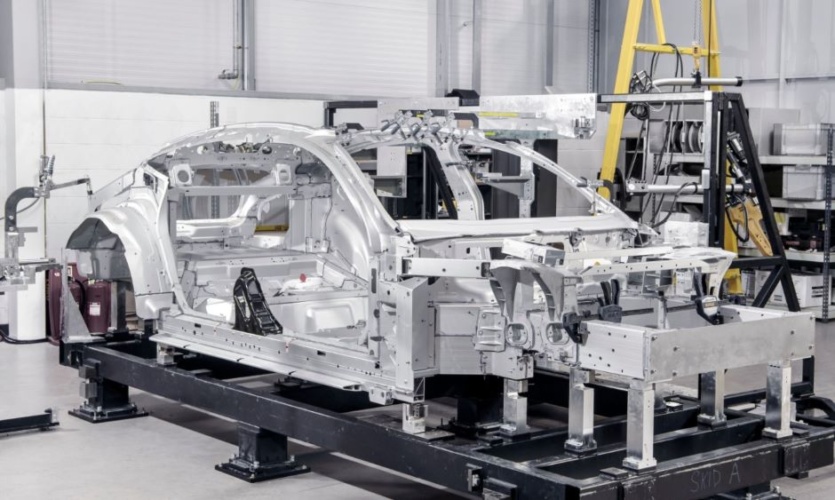UK team develops bonded aluminium process for Polestar 5
Polestar’s UK R&D team at MIRA Technology Park have developed a bonded aluminium manufacturing process for the upcoming Polestar 5 electric performance 4-door GT.

Vehicles made with mixed metal structures are bonded with welds and around 3,500-4,000 rivets compared to bonded aluminium unibody technology that uses adhesive and oven curing to join parts. The process results in a structure that is lightweight and rigid, but it is also labour-intensive and challenging to scale up without sacrificing quality. Consequently, bonded aluminium has been restricted to low-volume performance cars.
Now, Polestar said its 280-strong team have resolved this challenge by developing an entirely new, faster manufacturing process that develops the body and platform in unison.
Related content
Measuring the true impact of electric vehicles
As a result of the new materials and techniques involved, the body-in-white is expected to weigh less than that of cars in smaller segments, contributing to improved vehicle efficiency, real-world EV range and dynamic responsiveness. The new bonded aluminium platform will also help drive faster product introduction, high quality and platform rigidity.
Register now to continue reading
Thanks for visiting The Engineer. You’ve now reached your monthly limit of news stories. Register for free to unlock unlimited access to all of our news coverage, as well as premium content including opinion, in-depth features and special reports.
Benefits of registering
-
In-depth insights and coverage of key emerging trends
-
Unrestricted access to special reports throughout the year
-
Daily technology news delivered straight to your inbox










Construction industry lags in tech adoption
Are these the best people to ask "Insights from 2,000 Industry Leaders"? - what would their customers views be like (perhaps more...